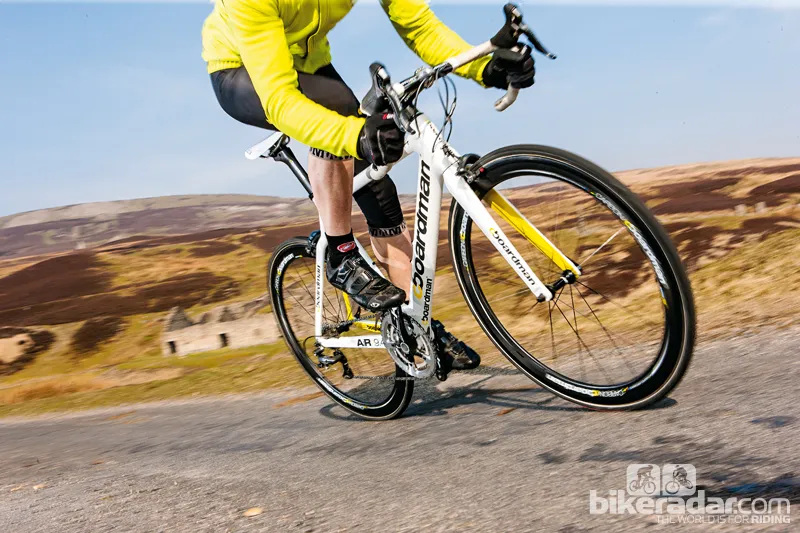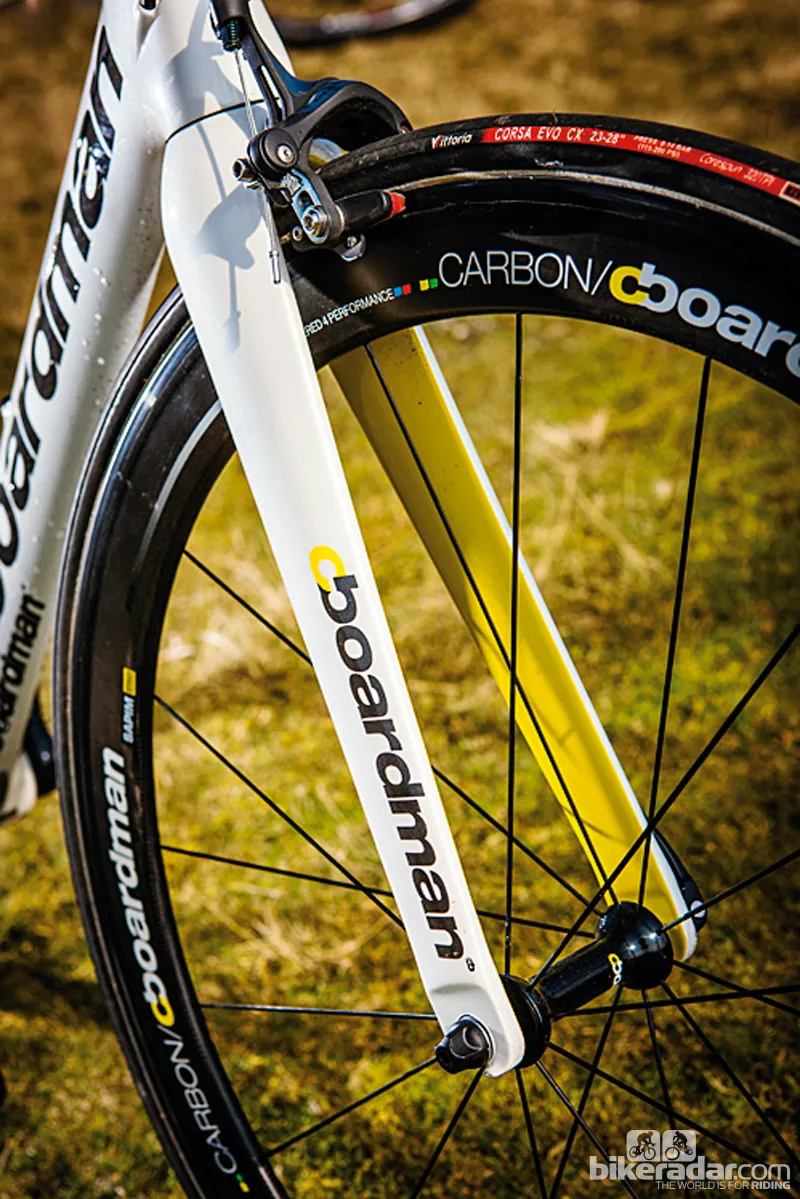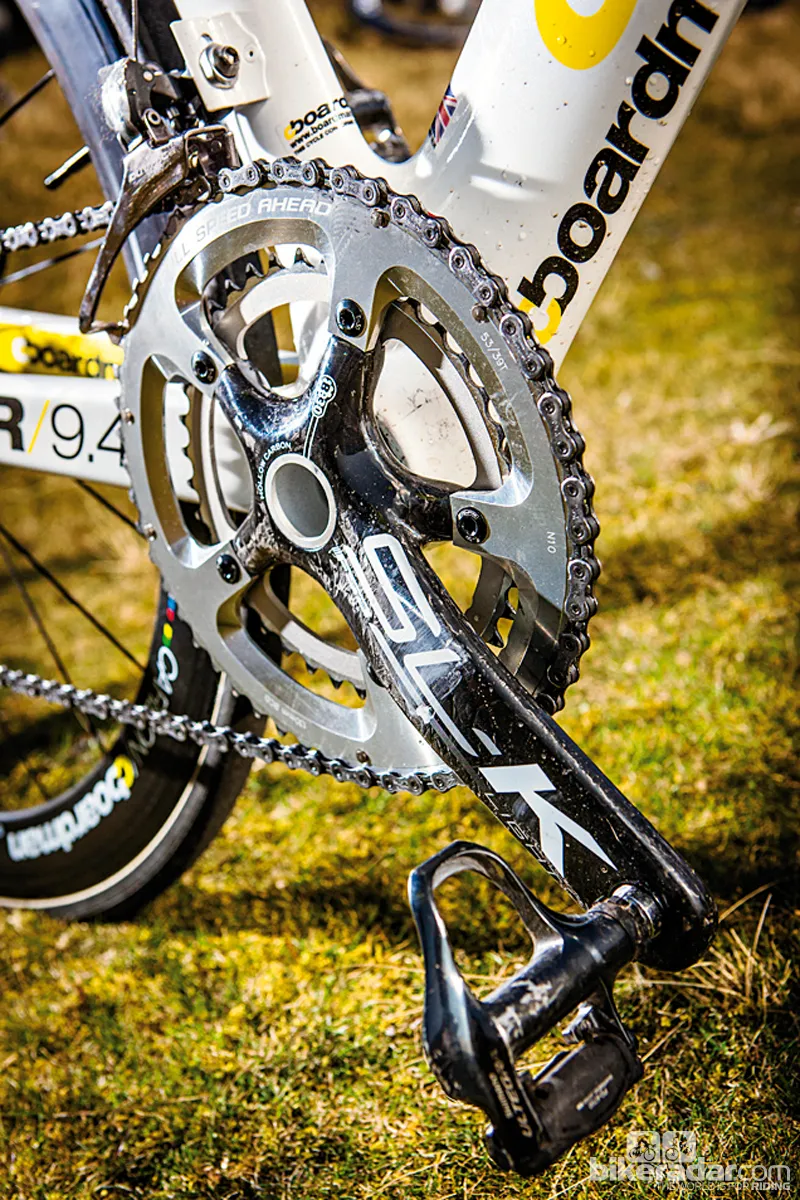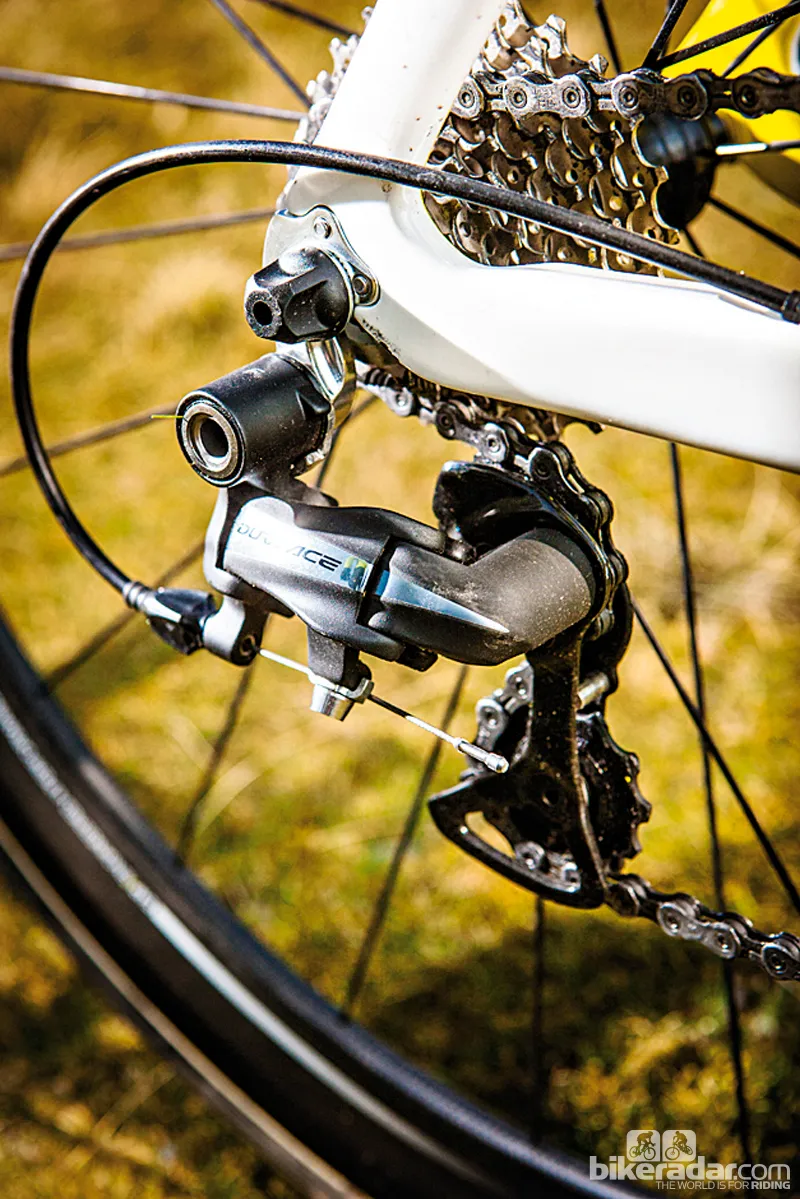Chris Boardman’s outstanding racing career was synonymous with aero innovation, and it shows in his bikes. His successes owed a lot to his meticulous preparation and a cutting-edge attitude to aerodynamic advantage.
It’s no surprise, then, that his AiR aero road bikes are exceptionally efficient and coherently designed performance packages. They’re also astonishingly good value, which means that this relatively cheap bike will happily ride shoulder to shoulder with serious super bikes.
Ride and handling: Aero advantage and carbon that feels pricier than it is
The most telling thing about the Boardman’s ride is that there’s simply no trace of the fact that this bike costs a fraction of other aero machines. While we thought we’d notice the lower grade carbon, it feels every bit as responsive as the top frame. Granted it’s not as brutally rigid as the Cervélo S5 or Ridley Noah Fast under power, but the BB30 crank and big chainstays mean it certainly never feels like it’s squandering effort.
The impressively low bike weight means the AiR 9.4 climbs with equal enthusiasm on both long and short climbs.
The rear hub engages really quickly, so you’re back on the power immediately out of corners. Even without hidden brakes or other fancy touches, there’s definitely enough aero effect going on here to produce a clean, sustained speed feel compared with a conventional road bike.
When pushed hard it’s not totally pin-sharp through corners, and the wheels and frame are prone to strong gusts of wind. However, the reassuringly stable handling meant we never had any nervous issues, even when ripping the big ring down twisting, gravel-centred roads.
The AiR 9.4 is extremely comfortable for an aero bike.The tub tyres definitely help take the edge off those unavoidable cattle grids and potholes – as well as surviving better than clinchers – but the whole bike glides rather than chatters.
The AiR 9.4’s Shimano gearing is flawlessly smooth and quiet and the bars and saddle are pleasantly long-ride-compliant. Add in the Boardman aero edge that is invisibly massaging your speed upwards the whole time you’re riding it, and this bike’s not just an absolute bargain for the price but also an effortless way to clock up startlingly fast mileage at any price.

Frame and equipment: Outstanding spec value and lightweight wheels
The AiR 9.4 frame uses the same mould as the range-topping 9.8 model, the same one raced by the Brownlees. The 9.4’s wind tunnel-honed design also owes a lot to that of the dedicated AiR TT triathlon/time trial bike.
Internally routed cables are tucked neatly into the side of the head tube, and smoothly sculpted aero tubes taper back to the seat tube with a matching carbon aero seatpost and thin-bladed seatstays. There are no gimmicks here: brakes are conventionally positioned, and the fork isn’t stepped or integrated into the frame in any special way – just the clean lines that Boardman has refined in the wind tunnel.
As it’s in line with the wind, the powertrain bottom line can be much more muscular with the big, smooth BB30 bottom bracket block leading back into big, tapering chainstays designed to maximise power transfer. Despite using a cheaper, slightly lower grade of carbon fibre construction than the 9.8, it’s still reasonably light for an aero frame.
Before anyone had the chance to realise how well their bikes rode, Boardman bought their way into buyers’ consideration with outrageously good component selections for the price. That’s still the case today, with a Shimano Dura-Ace gear and brake setup teamed with an oversized BB30 axle carbon fibre FSA SLK chainset. Ritchey finishing kit creates a lightweight cockpit, while Fizik’s Arione saddle is a superb place from which to tap out the miles.
Boardman have taken a really bold step with the wheels, though. The obvious choice would be a set of deep-section clincher wheels and normal tyres, prioritising their conventional puncture repair simplicity over the increased weight and sluggish slower speed feel that often accompanies them. Instead, they’ve gone for a set of own-brand, 50mm deep-section wheels, with tubular tyres glued into place. The result is a weight saving of around 200g per wheel (because there’s no rim to add weight) and a noticeably smoother ride.
It’s certainly a real opinion divider, but with a bit of patience and preparation tubs are a lot easier to fit and live with than the industry scaremongering would suggest. Besides, which would you rather have to buy as extras: a £200-300 set of clincher wheels or a £1,000-plus set of race wheels?




